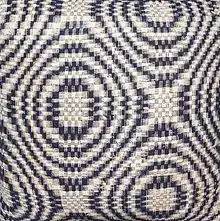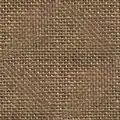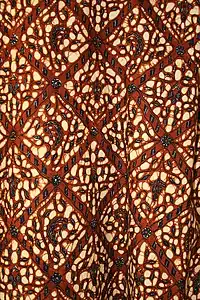Linsey-woolsey
Linsey-woolsey (less often, woolsey-linsey or in Scots, wincey) is a coarse twill or plain-woven fabric woven with a linen warp and a woollen weft. Similar fabrics woven with a cotton warp and woollen weft in Colonial America were also called linsey-woolsey or wincey.[1][2] The name derives from a combination of lin (an archaic word for flax, whence "linen") and wool. This textile has been known since ancient times; known as Shatnez in Hebrew, the Torah and hence Jewish law explicitly forbid wearing it.[3]

History
The coarse fabric called stuff woven at Kidderminster from the 17th century, originally a wool fabric, may have been of linsey-woolsey construction later on. Linsey-woolsey was an important fabric in the Colonial America due to the relative scarcity of wool in the colonies.[2] Many sources[4] say it was used for whole-cloth quilts, and when parts of the quilt wore out the remains would be cut up and pieced into patchwork quilts. Some sources dispute this[5] and say that the material was too rough and would have been used instead for clothing and occasionally for light blankets. It was also used as a ground fabric for needlepoint.
Linsey-woolsey was valued for its warmth, durability, and cheapness, but not for its looks.
Linsey-woolsey is also sometimes used to refer to 18th century woven coverlets or bed coverings made with a linen warp and woollen weft. The term is sometimes incorrectly applied to glazed textiles.[6]
Linsey-woolsey continues to be woven today in small quantities for historical recreation and Colonial period decorating uses.
Cultural references
- Mark Twain in his 1884 novel, The Adventures of Huckleberry Finn "The women had on sun-bonnets; and some had linsey-woolsey frocks,"
- Lucy Maud Montgomery uses the term "wincey" six times in Anne of Green Gables:[7] "a very ugly dress of yellowish gray wincey".
- Compton Mackenzie creates a minor character called Colonel Lindsay-Woolsey in his 1941 comedy novel The Monarch of the Glen.
- In Patrick Dennis's 1955 comic novel Auntie Mame Lindsay Woolsey is Mame Dennis's publisher friend.
- In the 1976 film The Outlaw Josey Wales, Josey's injured sidekick, Jamie (Sam Bottoms), refers to his father's embarrassing ability to sew ornate designs on his otherwise drab linsey-woolsey shirt.
- Washington Irving in his 1820 short story, The Legend of Sleepy Hollow, "a quantity of linsey-woolsey just from the loom."
- Harriet Jacobs in her autobiography Incidents in the Life of a Slave Girl, mentions "I have a vivid recollection of the linsey-woolsey dress given to me every winter by Mrs. Flint. How I hated it! It was one of the badges of slavery."
- Elihu Burritt in Walks in the Black Country and its green border-land: "Here I saw the greatest contrast that I ever witnessed in England—Nature in linsey-woolsey petticoat and Nature in her court-dress"
Notes
- American Heritage Dictionary of the English Language, Fourth Edition, cited at FreeDictionary.com, retrieved 22 June 2007, and Random House Dictionary, via retrieved 25 June 2007
- Baumgarten, Linda: What Clothes Reveal: The Language of Clothing in Colonial and Federal America, Yale University Press, 2002. ISBN 0-300-09580-5, page 96
- "A garment of a Shaatnez mixture shall not come upon you" (Leviticus 19:19); "Do not wear Shaatnez - wool and linen together" (Deuteronomy 22:11).
- See Linsey-Woolsey at Quilt.com, retrieved 22 June 2007
- See for example Historic Textile Research & Articles Archived 2007-07-26 at the Wayback Machine, retrieved 22 June 2007
- Linsey-woolsey compared to glazed fabrics in antique quits Archived 2008-05-09 at the Wayback Machine
- Random House Dictionary, via retrieved 25 June 2007
Further reading
- Tozer, Jane and Sarah Levitt, Fabric of Society: A Century of People and their Clothes 1770-1870, Laura Ashley Press, ISBN 0-9508913-0-4


.svg.png.webp)